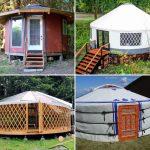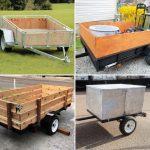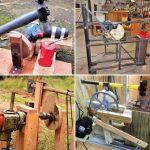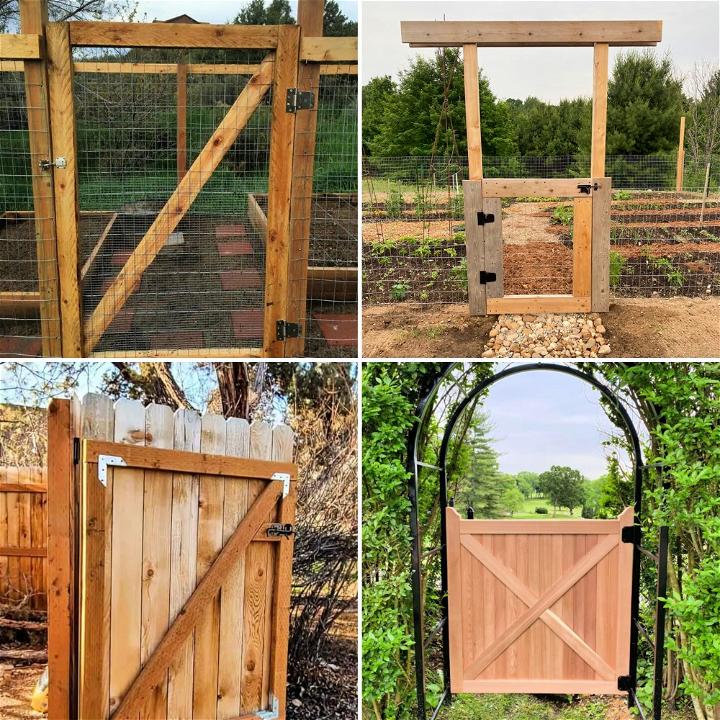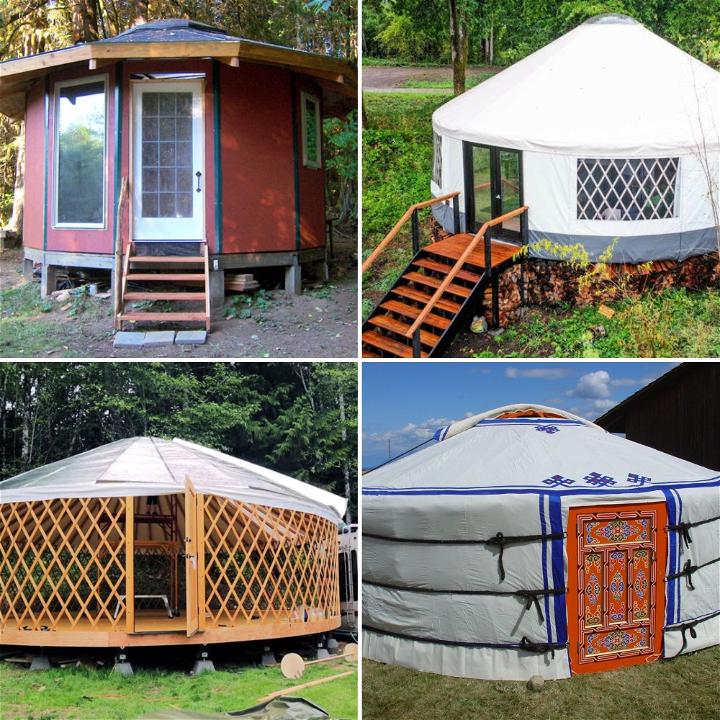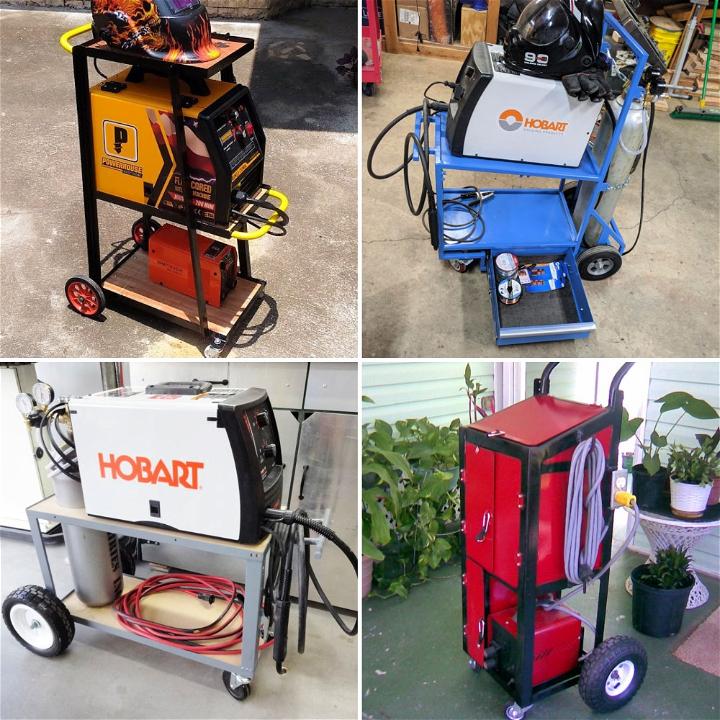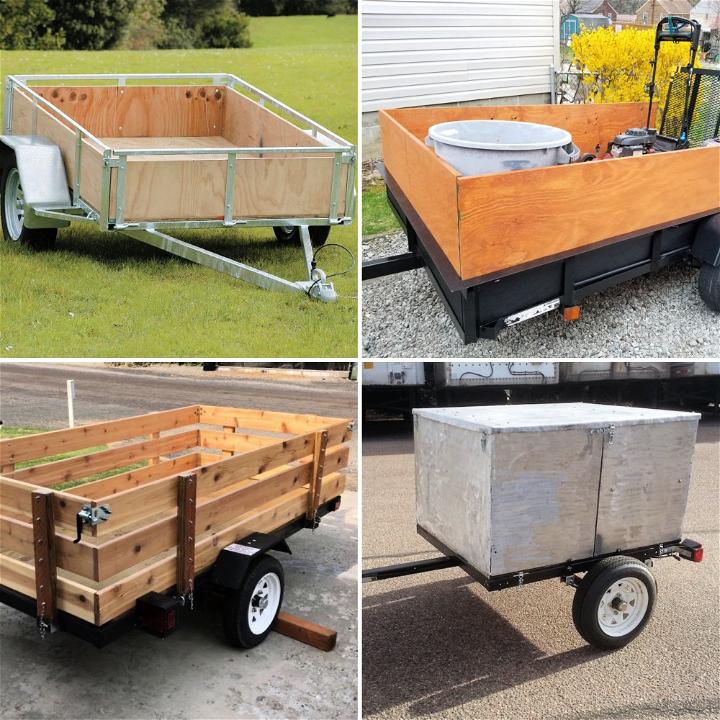A root cellar is an underground room or storage space, traditionally used for preserving vegetables, fruits, nuts, and other perishable food items through the winter months. The principle behind a root cellar is simple: it utilizes the natural cool and humid conditions of being below ground to extend the life of stored food. This method was widely used before the advent of modern refrigeration and continues to be a sustainable option for food preservation, especially in the context of homesteading.

How Do Root Cellars Tie In With Homesteading?
Homesteading involves living a lifestyle of self-sufficiency. This includes growing your own food, raising animals, and preserving food for future use. Root cellars are an essential aspect of this self-sufficient lifestyle, providing a natural and energy-efficient way to store the harvest. They enable homesteaders to have access to fresh produce year-round, reduce waste, and lessen dependence on the commercial food supply.
How Much Does it Cost to Build a Root Cellar?
The cost of building a root cellar can vary widely depending on factors such as size, location, materials used, whether you do it yourself or hire someone and the complexity of the design. A basic, small-scale root cellar could be constructed for a few hundred dollars, especially if you can do the work yourself and source materials economically. More elaborate constructions involving professional excavation and construction could run into the thousands.
How Can I Make a Cheap Root Cellar?
One of the most cost-effective ways to build a root cellar is to adapt existing structures or natural features on your property. For example, you could:
- Convert a portion of your basement or an outside cellar entrance.
- Bury a new or used freezer or refrigerator (with careful ventilation adjustments) in the ground.
- Use a buried shipping container with proper modifications for ventilation and humidity control.
- Dig a pit or trench in a shaded outdoor area, line it with straw, and cover it with soil, using a sturdy lid for access.
Types of Root Cellars
Root cellars can come in various forms, adapting to needs, budget, and available space. The main types include:
- The Underground Cellar, excavated below the frost line and accessed via a hatch or stairway.
- The Basement Root Cellar, sectioned off in the corner of a basement with modifications to ensure cool, humid conditions.
- The Hillside or Banked Cellar, built into a hill and utilizing the natural slope for insulation and drainage.
- The Above-Ground Structure, which is heavily insulated and buried in earth (bermed) on all but one side for easy access.
Root Cellars In Different Climates
The effectiveness and design of a root cellar can vary by climate:
- Cold climates require insulation to keep the cellar from freezing, and venting to manage temperature and humidity.
- Temperate climates are ideal for traditional root cellars, as they naturally provide the required conditions with minimal modification.
- Warm or arid climates may need additional cooling or humidifying strategies, like evaporative cooling or burying deeper below ground to reach cooler temperatures.
Using local conditions, utilizing natural temperature and humidity, root cellars help homesteaders store food effectively.
How to Build a Root Cellar - Step by Step Guide
Learn how to build a root cellar with this step-by-step guide below:
Planning and Preparation
1. Select the Right Location
Identify a location that's easily accessible yet far enough from trees to avoid root damage and ensure stability. Consider drainage and potential water accumulation spots to avoid flooding.
2. Gather Materials
You'll need:
- Eastern red cedar or a similarly rot-resistant wood for framing.
- Gravel, drainage fabric, and perforated piping for drainage.
- Vapor barrier to prevent moisture ingress.
- Turkey grit (manufactured sand) for additional protection over the vapor barrier.
- Southern yellow pine for sheathing; though less rot-resistant, it's effective as no part of this structure should be earth-contact.
- Multiple layers of felt and plastic sheeting for waterproofing.
3. Excavate the Site
Using an excavator, dig the hole for your root cellar. Keep the topsoil and subsoil separated as you'll need to replace them later in the process.
Constructing the Shell
1. Lay the Foundation
After excavation, lay gravel at the bottom of the pit and ensure good drainage by installing perforated pipes wrapped in drainage fabric, covered with more gravel.
2. Build the Structure
Assemble the walls and roof of the cellar outside of the hole. Eastern red cedar is recommended due to its high rot resistance and aromatic properties. Ensure that the framing is sturdy enough to withstand earth covering and potential storm conditions.
3. Waterproofing
Cover the floor with a vapor barrier before adding gravel and turkey grit for floor protection. Apply three complete layers of roofing felt topped by a 6 mil plastic sheet over the whole structure for waterproofing.
4. Wall Installation
Carefully tilt and install the walls using an excavator. Due to the weight of the materials, especially when wet, professional equipment or assistance is advisable.
Finishing Touches
1. Ensure Adequate Ventilation
Implement an efficient ventilation system to manage humidity and temperature within the cellar. Use vents and perhaps a turbine vent for air exhaust, with provisions for an air inlet.
2. Install Doors and Seal Gaps
Mount a sturdy door that can seal tightly. Ensure all gaps are sealed to prevent moisture ingress and maintain internal conditions.
3. Backfill and Landscape
Backfill the excavated soil around the root cellar carefully. Avoid mechanical compaction to reduce stress on the walls. Plant grass and clover on the mound to prevent erosion and maintain soil health.
Video Tutorial
For a step-by-step video tutorial on building a root cellar that can double as a storm shelter, watch the useful resource provided by Tick Creek Ranch. Watch the detailed journey here.
It's an invaluable visual complement to this guide, outlining each technique in a clear and easy-to-understand manner.
Building a root cellar allows for food storage and can double as a storm shelter in emergencies. With proper planning and effort, you can build a durable cellar to suit your needs.
Design Principles for Root Cellars
Root cellars are a timeless solution for natural food preservation. By understanding the key design principles, you can build a root cellar that is both functional and efficient.
Ventilation
Proper ventilation is crucial. It prevents the buildup of ethylene gas, which can cause produce to spoil, and reduces the risk of mold. Ensure fresh air can enter and stale air can exit, allowing air to circulate around the produce.
Insulation
Insulation is vital to maintain a consistent temperature. Earth-sheltering provides natural insulation. Consider the soil's insulating properties and opt for a packed earth or gravel floor over concrete to maintain higher humidity levels.
Humidity Control
A high humidity level, between 80-95%, is essential to prevent produce from drying out. However, too much humidity can cause issues like rusting canning jar lids, so aim to keep it below 95%.
Darkness
Darkness is necessary to prevent sprouting. If your root cellar has a window, keep it covered, and avoid leaving lights on.
Storage Solutions
Wood shelving and bins are used for their antibacterial properties and slower heat conduction compared to metal. Choose naturally rot-resistant woods and avoid treated wood.
Root Cellar Innovations
Innovations in root cellar design are enhancing sustainability and convenience for modern homesteaders.
Groundfridge: The Sustainable Upgrade
The Groundfridge is a prefabricated root cellar designed with sustainability in mind. It uses passive cooling to keep food fresh and is an innovative take on traditional root cellars. With its hobbit-sized door and underground sphere, it provides a unique and eco-friendly solution for food storage.
Modern Materials and Techniques
Modern root cellars incorporate new materials and construction techniques to improve durability and efficiency. Cinder blocks or bricks can be used for lining walls, and concrete floors can be considered if moisture levels are controlled.
By applying these principles, you can make a root cellar that stores food naturally and supports sustainability. Mimic nature's storage system.
How To Store Fruits and Vegetables In A Cellar
Storing fruits and vegetables in a cellar can be an excellent way to extend their shelf life and enjoy fresh produce year-round. Here’s a guide to help you store your produce effectively in a cellar environment.
Selecting the Right Produce
Only the freshest, unblemished fruits and vegetables should be stored in your cellar. Any items with bruises, cuts, or signs of rot should be used immediately or discarded, as they can spoil and affect other stored produce.
Building the Ideal Environment
A cellar should maintain a temperature of 32 to 40 degrees Fahrenheit and a humidity level of 85-95%. This mimics the natural cool and damp conditions of the earth, which are ideal for storing root vegetables and hardy fruits.
Organizing Your Cellar
- Insulation: Proper insulation is crucial to maintain the cellar’s temperature and humidity levels.
- Ventilation: Adequate ventilation helps to regulate air flow and temperature.
- Humidity Control: Use a hygrometer to monitor the humidity and employ methods like damp sand or water pans to increase moisture if necessary.
- Shelving: Install shelves that allow for airflow around the produce. Avoid overcrowding, as this can lead to mold growth and spoilage.
Specific Storage Tips
- Root Vegetables: Carrots, potatoes, beets, and turnips store well in root cellars. They should be kept in bins or on shelves, not directly on the ground.
- Cabbages: Store cabbages with roots attached, replanted into soil or sand, or wrap them individually and place them on shelves.
- Apples and Pears: These fruits can be stored in the cellar but should be kept separate from vegetables to prevent flavor transfer.
Maintenance and Monitoring
Regularly check your stored produce for signs of spoilage and remove any affected items immediately. Keep a record of what you have stored and when it was harvested to help manage your cellar inventory effectively.
FAQs About Root Cellars
Root cellars are an effective way to store produce naturally. Here are some common questions and clear answers to help you understand and make the most of a root cellar.
What is a root cellar?
A root cellar is an underground room used to store fruits, vegetables, nuts, and other perishable goods. It utilizes the earth's natural insulation to maintain a stable, cool temperature and high humidity.
How does a root cellar work?
A root cellar keeps food fresh by maintaining a temperature between 32°F and 40°F and a humidity level of 80-95%. It uses the earth's consistent temperature to cool and the ground's moisture to humidify.
What can I store in a root cellar?
You can store a variety of produce in a root cellar, especially root vegetables like potatoes, carrots, and beets. Apples, pears, and other fruits also store well, along with nuts and cured meats.
How do I ventilate a root cellar?
Ventilation is key to preventing ethylene gas buildup, which can cause spoilage. Include vents that allow fresh air in and stale air out, and ensure air can circulate around the stored produce.
Can I build a root cellar in my existing home?
Yes, you can add a root cellar to your existing home. It can be built as a separate structure outside or integrated into your basement if conditions allow for proper temperature and humidity control.
What materials are best for constructing a root cellar?
Traditional root cellars use materials like wood, concrete, or stone. Modern root cellars may use cinder blocks or bricks for walls and packed earth or gravel for floors to maintain humidity.
How do I maintain the right humidity level?
To maintain the ideal humidity level, use a hygrometer to monitor it. If it's too low, introduce water sources like damp sand or water containers. If too high, improve ventilation to reduce moisture.
By addressing these FAQs, you can better understand how a root cellar functions and how to build one that suits your needs.
Discover 15 DIY Root Cellar Plans for Storing Food and Preserving Produce

1. Low-Cost DIY Root Cellar

Diving into a low-cost DIY root cellar project? It's a budget-friendly adventure to store your harvest. This solution is perfect for keeping your produce fresh without breaking the bank. Embrace the satisfaction of building functional storage with minimal investment.
2. Building an 8x8 Root Cellar

An 8x8 root cellar offers ample space for anyone wanting to store their bounty. It combines practicality with manageable size, making it an ideal choice for gardeners with moderate storage needs. This compact yet spacious option is a gem for keeping your goods garden fresh.
3. Build Your Own Concrete Root Cellar

A concrete root cellar stands the test of time, offering durability and stability. It's a fantastic choice for those looking to invest in a more permanent solution for preserving their produce. Enjoy the cool, steady temperatures that concrete naturally provides, ensuring your produce stays fresher and longer.
4. Homemade Root Cellar Out of an Old Refrigerator
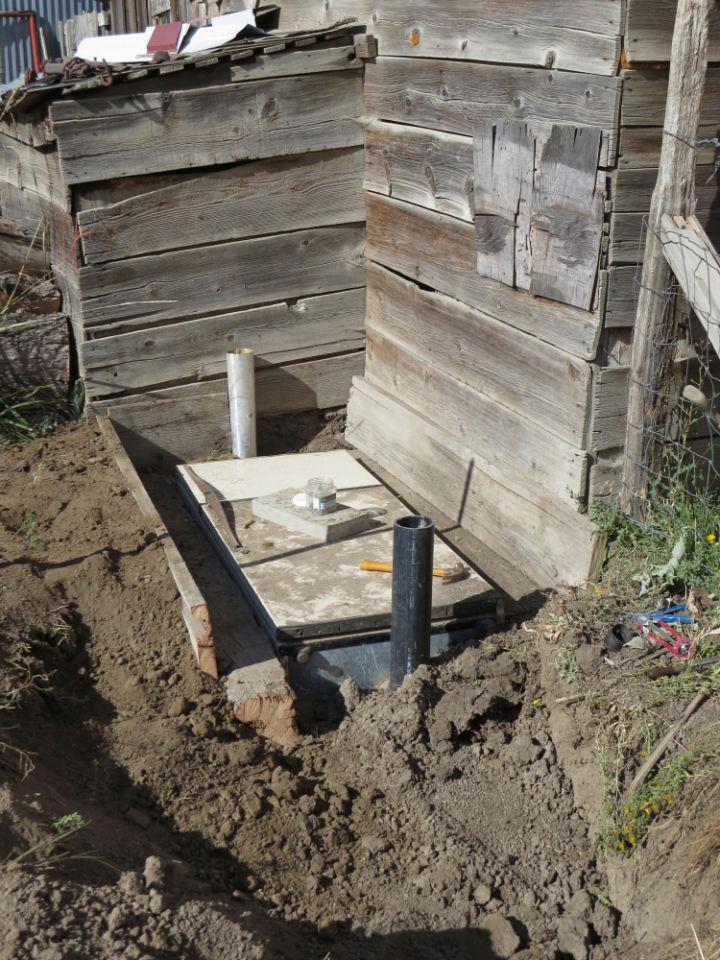
Transforming an old refrigerator into a root cellar is an ingenious recycling project. Not only does it repurpose unused appliances, but it also provides a cool, dark space for your harvest. A smart and sustainable choice for eco-conscious gardeners looking to reduce waste.
5. Free Underground Root Cellar Plan

Dive into the world of underground root cellars with a free plan that guides you through the process. It's an accessible starting point for those interested in tapping into traditional methods of food preservation. Step-by-step, this plan unveils the mystery behind building your own subterranean storage.
6. How to Construct Karls Root Cellar
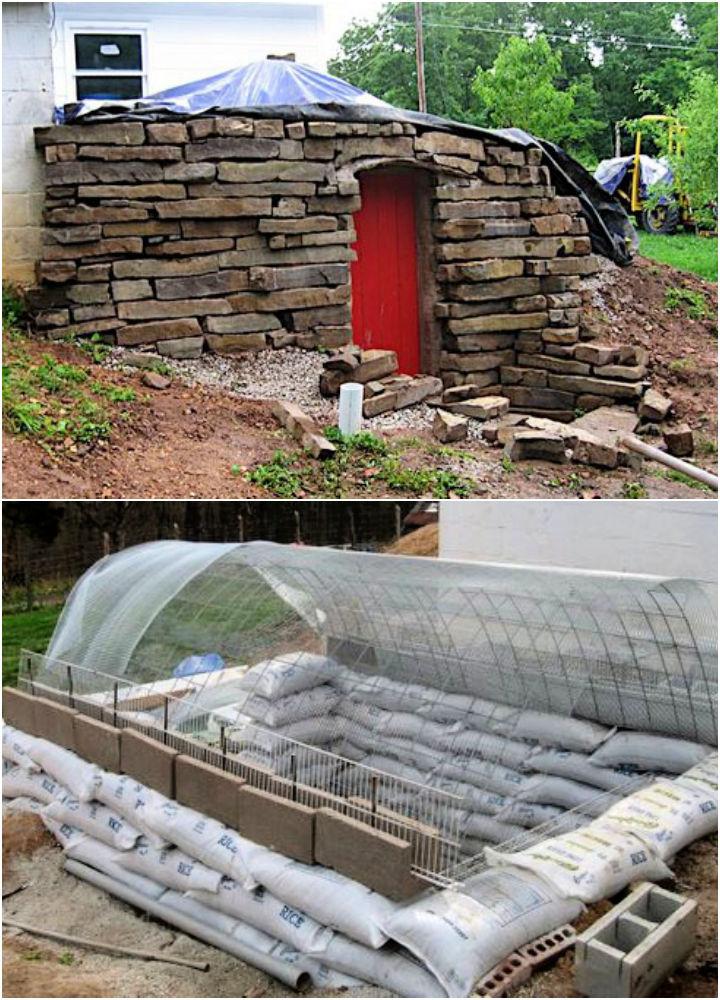
Explore the unique approach of constructing Karls root cellar, blending traditional techniques with modern twists. This guide offers insights into building a root cellar that honors past wisdom while incorporating new ideas. A true journey for the innovative gardener ready to embark on a creative build.
7. How to Make Earthbag Root Cellar
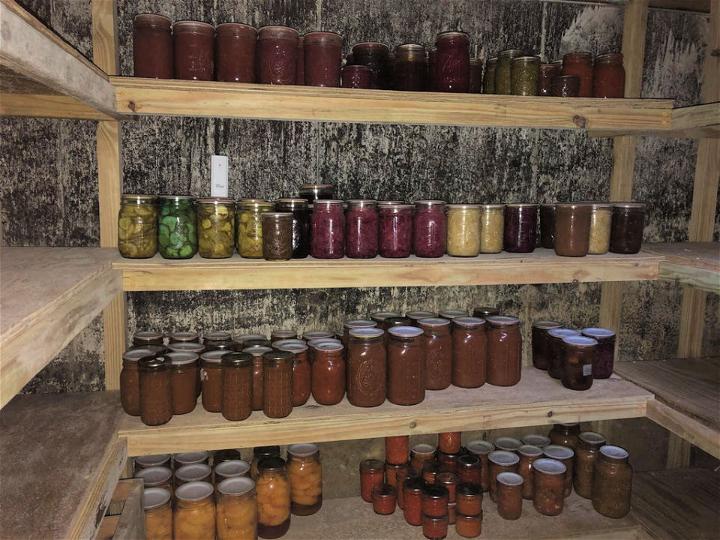
An earthbag root cellar is an eco-friendly project that utilizes natural materials. It's perfect for those looking to minimize their carbon footprint while enjoying the benefits of a traditional root cellar. Embrace the harmony of working with the earth to build a sustainable storage solution.
8. DIY Above Ground Root Cellar

An above-ground root cellar is a convenient alternative for those with limited digging capabilities or space. This innovative approach allows you to enjoy the benefits of a root cellar without the need for excavation. A practical and versatile solution that adapts to your garden's landscape.
9. ICF Root Cellar Design

Discover the ICF (Insulated Concrete Form) root cellar design for ultimate insulation and durability. This method provides a controlled environment for your harvest, ensuring optimal preservation conditions. For those aiming for efficiency and longevity, ICF offers a solid foundation.
10. DIY Backyard Root Cellar
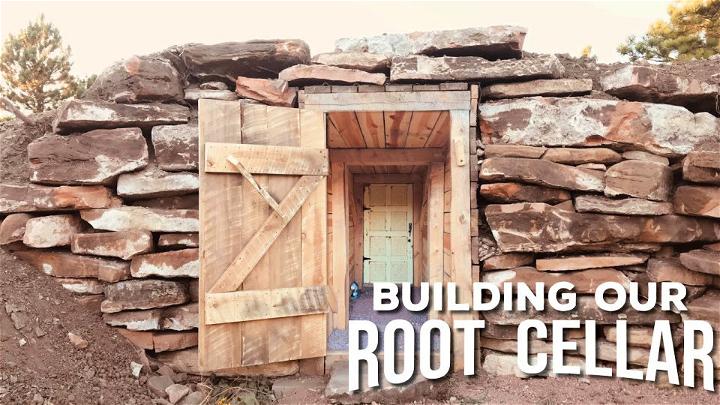
Build a backyard root cellar to easily access your stored produce while keeping it in prime condition. This DIY project brings convenience and practicality to your backyard, offering a dedicated space for your gardening achievements. A delightful addition for any avid gardener seeking to optimize their harvest preservation.
11. Simple and Cheap Root Cellar

A simple and cheap root cellar is a great way to store your harvest. By using minimal resources and a bit of creativity, you can maintain the freshness of vegetables and fruits for months. Its cost-effectiveness and simplicity make it a popular choice for backyard gardeners seeking sustainability.
12. How to Builan a Underground Root Cellar
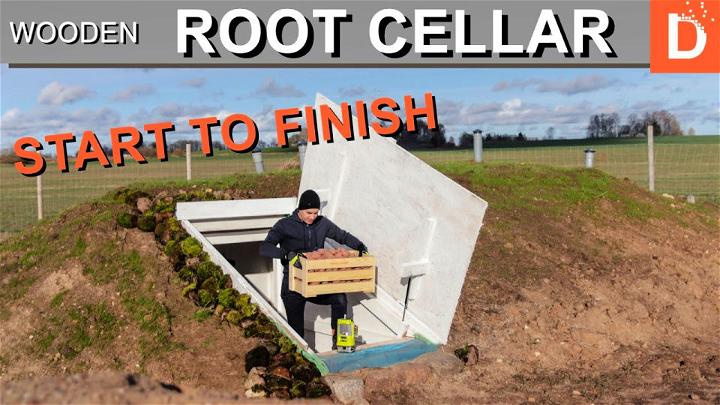
Building an underground root cellar can be a rewarding project. By excavating a space and implementing insulation methods, you build a natural cooling system that preserves your produce. It's a timeless method that harnesses the earth's stable temperatures to keep your food fresh longer.
13. DIY Basement Root Cellar

Building a DIY basement root cellar transforms unused space into a valuable storage area. By leveraging the cool and stable temperatures of your basement, you can easily store root vegetables, apples, and canned goods. It's an efficient way to utilize what you already have, ensuring your harvest doesn't go to waste.
14. DIY Hidden Earthbag Root Cellar
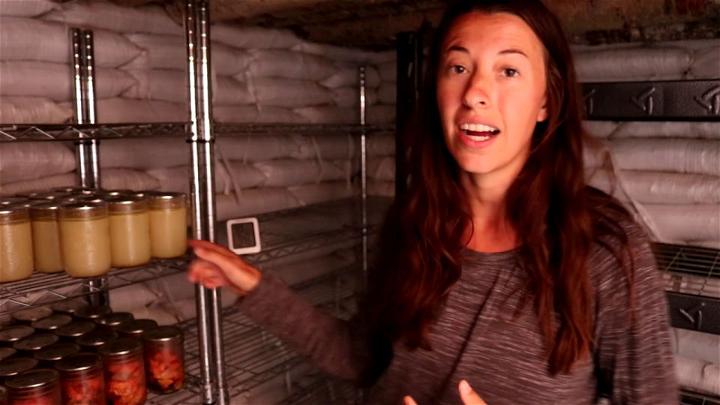
A DIY hidden earthbag root cellar not only offers a sustainable way to store food but also adds an element of eco-friendliness to your storage solutions. Using earthbags provides natural insulation and humidity control, making it an excellent option for those looking to maintain their produce in an environmentally conscious way.
15. Easy Root Cellar Out of a Metal Culvert
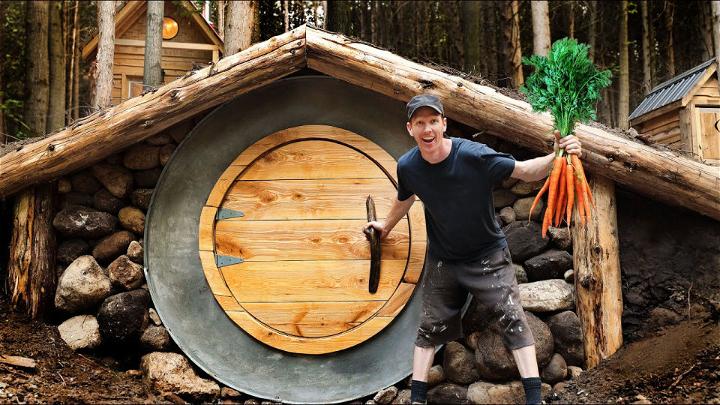
An easy root cellar out of a metal culvert combines durability with simplicity. By burying a metal culvert, you can quickly build a secure and rodent-proof storage space. It's an ingenious solution for those seeking a low-maintenance option that stands the test of time, keeping your harvest fresh and accessible.
Conclusion:
Wrapping up, building a root cellar can be a rewarding project for any homeowner. With proper planning, construction, and maintenance, you can enjoy the benefits of storing your produce throughout the year. Embrace the opportunity to build a sustainable and cost-effective way to preserve your harvest. A root cellar can be a valuable addition to your homestead, providing you with fresh fruits and vegetables all year round.


